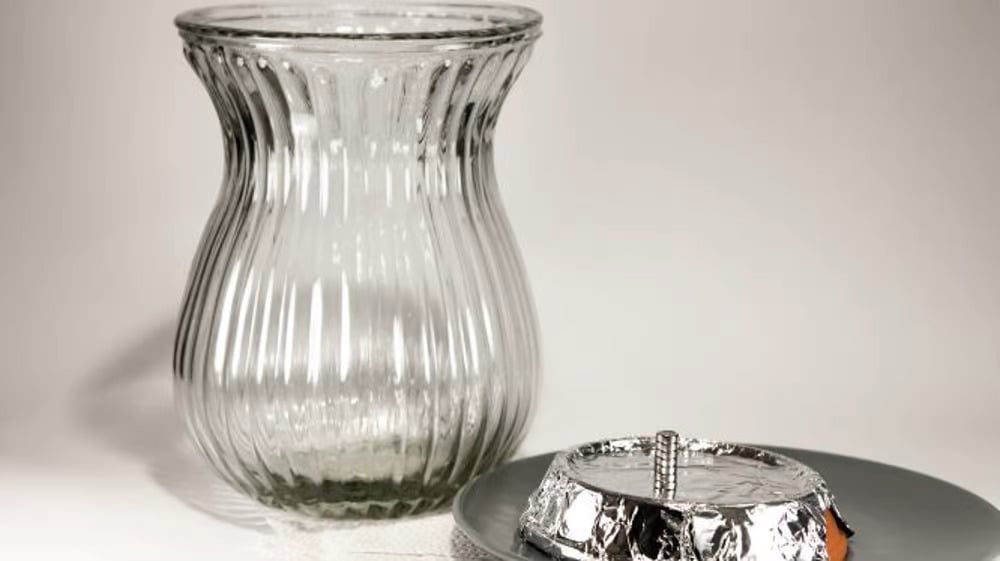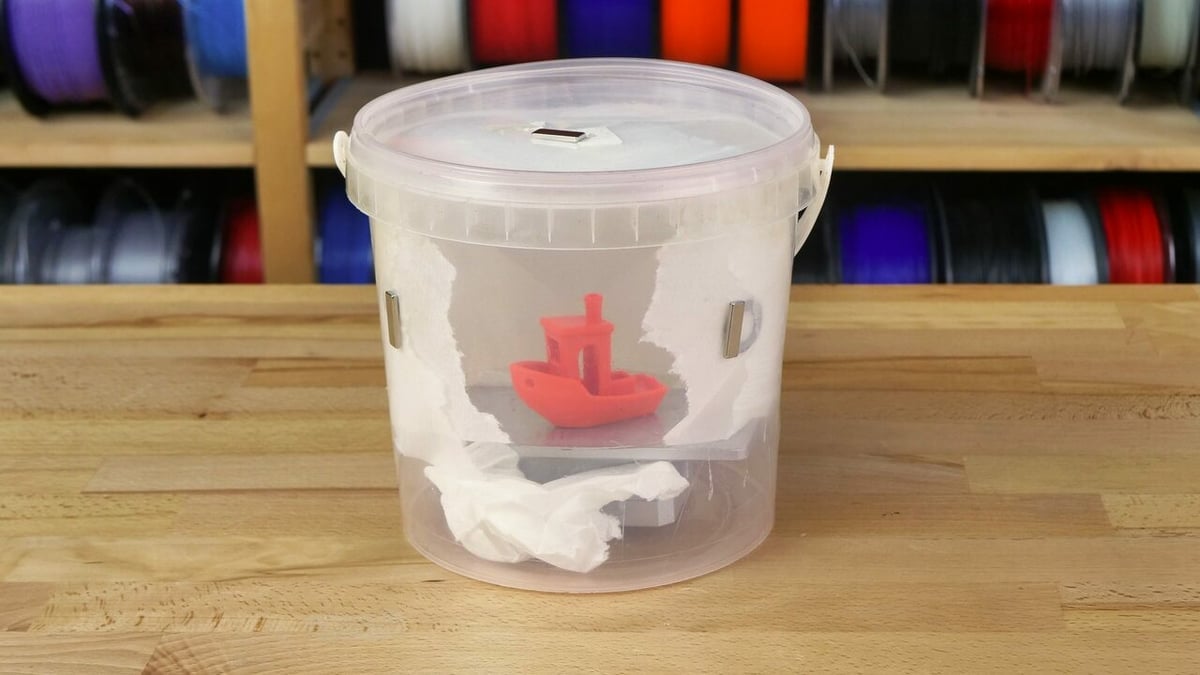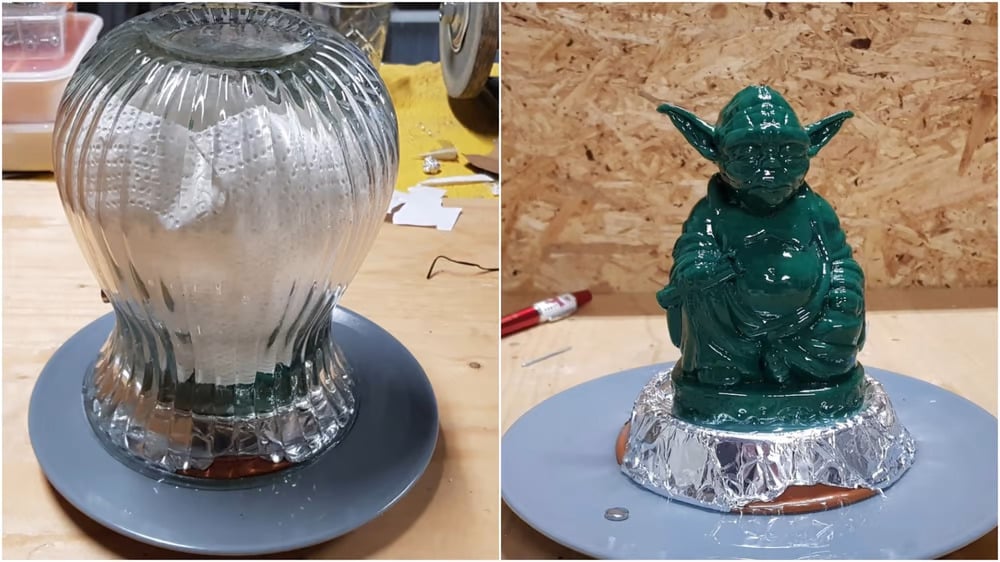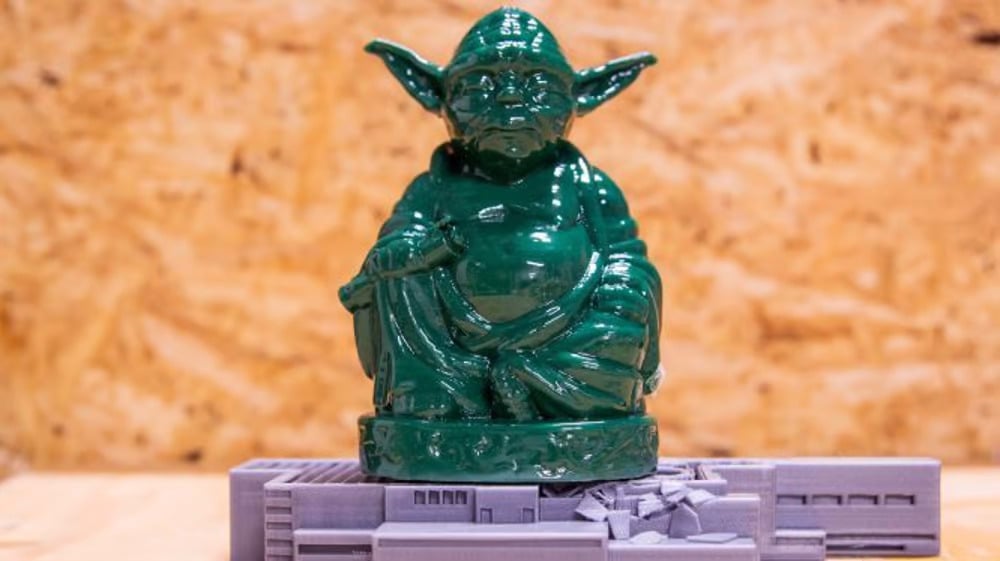One of the many things that fused deposition modeling (FDM) 3D printers lack is the smooth finish you get from injection-molded parts. The surface of FDM parts has a rather matte, rough finish with visible layer lines, regardless of the layer height employed during printing.
Post-processing will be required to eliminate these layer lines, and one of the most popular ways is sanding and filling until a smooth surface is achieved. As you can imagine, this can takes ages to get anywhere close to smooth.
However, a reasonably popular workaround solution for post-processing 3D printed parts is acetone vapor smoothing. This method can be applied to any material that can be dissolved in acetone but is mostly used with ABS filament.
Acetone is a colorless solvent that’s mainly used for cleaning purposes. ABS is highly reactive to acetone, and it’s possible to dissolve only the topmost surface of ABS parts by using acetone in vapor form. This completely eliminates any visible layer lines and gives you a clean and smooth surface finish.
There are some drawbacks to this method, though. It can be hard to control the smoothing process, so some dimensional accuracy and small details can be lost after it’s done. Moreover, pure acetone is considered a safety hazard and must be handled with the utmost care, as we’ll see next.
A Word of Caution

Acetone can be an adequate (although uncommon) tool for everything from cleaning your hot end to welding together 3D printed parts. However, you need to keep in mind that acetone is a hazardous chemical in its purest form.
To begin with, acetone is a highly flammable and volatile substance that can ignite at room temperature, so never use it near fire or anything that can create a spark. Also, ensure that acetone is stored in cool, well-ventilated areas away from direct sunlight and heat sources.
In terms of potential health effects, high purity acetone can cause headaches, nausea, dizziness, drowsiness, and confusion if inhaled, according to the Canadian Centre for Occupational Health and Safety. Be sure to always work in a well-ventilated area and use respiratory protection equipment such as gas masks whenever possible.
Other personal protective equipment such as non-nitrile gloves as well as eye and face protection is also highly advised because skin and eye exposure can cause mild to severe irritation.
Due to all these potential safety hazards, pure acetone can be a little troubling to source in some countries. Check out the current regulations in your country before considering this smoothing method.
Tools and Materials

There are countless methods for acetone smoothing your 3D print, some more dangerous than others. If you’re still committed to acetone smoothing, there’s a simple way to do it with everyday household items. Besides the protective equipment mentioned before, here’s what you’ll need:
- Acetone: High purity acetone (99-100%) is required. Nail polishing acetone is diluted and is neither strong nor volatile enough to create vapor and dissolve 3D printed surfaces.
- Paper towels: These are soaked in acetone, which facilitates its vaporization. Any paper towels or tissues that can absorb liquids will work.
- Small magnets: These will hold the soaked paper towels against the container’s walls – one on the outside of the container and one inside. The number of magnets and the strength required will depend on the container itself (more below).
- Transparent container: This should be large enough for the 3D printed part and preferably made of glass so that it’s transparent enough to observe the smoothing process taking effect. If the container has a lid that can tightly seal, great. Otherwise, you’ll need to use a solid base or plate that seals it enough for the acetone vapor to remain inside.
- Aluminum foil: This will isolate the ABS part and the bottom of the container, as metals are not dissolved by acetone.
Step 1: Preparation

Before handling the acetone, let’s set up the container and parts.
- First of all, consider how the part will be positioned according to the surfaces to be smoothed. The vapor will be able to reach the part’s top and lateral faces, but the bottom surface (which will be in contact with the aluminum foil) won’t receive the desired finish, so keep this in mind.
- Make sure the container can be sealed so that the acetone vapor remains inside. As the container will be placed upside-down during the process, the lid or some other surface (a plate, for example) will become the base where you’ll place the part. For containers without a lid, consider pouring some water on the base to create a better seal between the container and base.
- Take an aluminum foil sheet and fold it three to four times to make a base on which the 3D printed part will rest. You can also use anything made of glass, metal, or even failed PLA prints to raise the foil and the part, thus ensuring that there will be no contact between the part and any liquids resting on the bottom.
- Attach the dry paper towels to the inside surface of the container with the magnets in pairs. Make sure they’re tightly fixed to the container walls and that there’s no slack. Keep in mind that ABS can rapidly dissolve and distort if any part of the acetone-soaked paper towel even lightly touches the part. Also, try to leave a small gap between tissues so you’ll be able to peek inside the container and observe the smoothing process.
Step 2: Start the process

Now, we’re ready to handle the acetone and get this smoothing started.
- Carefully soak the attached paper towels inside the container by pouring in small amounts of acetone and rolling the container until everything is covered. Ensure no excess liquid remains in the container; all should be absorbed by the paper towels.
- Place the container upside down on the lid, or base, with the 3D printed part. Remember to avoid touching the part with the soaked paper towels, and check whether there’s a tight seal between the container and base. If you’re using water as a sealing agent, you might see some bubbles coming out from the water at the beginning of the process. This is normal and nothing to be afraid of.
- Write down the time or start a timer to keep track of the duration of the process.
Step 3: Waiting for the Magic

Now, we just have to wait until the liquid acetone vaporizes and starts dissolving the layer lines of the 3D printed part.
The duration of the process widely varies depending on the size of the part, the size of the container, the room temperature, and even how tightly the container is sealed. Usually, it can take anywhere from half an hour to a couple of hours. For reference, the Budda Yoda shown took just under two hours.
It should be much easier to follow the progress of the smoothing process with a transparent glass container. Otherwise, we would have to guess or even open the container, which would allow the vapor to escape.
There’s always a chance of over-smoothing the part, leading to the loss of all surface details or, worse, completely distorting the part. This is why a transparent container comes in handy.
It can take some practice to perfect the time required to get your desired level of surface finish, so don’t worry. After a little hands-on experience, you’ll figure out the best settings for yourself.
Step 4: Drying

Once you’re satisfied with how your part looks, it’s time to stop the process and let the dissolved surface dry out to become rigid again.
- First, make sure you’re in a well-ventilated area, then carefully remove the container, avoiding contact between the paper towels and 3D printed part.
- Refrain from touching the part once you remove the container. After all, it’s still in a semi-liquid state. You could leave fingerprints on the part or distort it entirely.
- Place the part in an isolated site and simply let it dry, allowing all excess acetone to vaporize into the air. It can take mere hours up to a couple of days to completely dry and become rigid again.
Be patient and enjoy. After all, this is when you’ll actually see the magic of acetone vapor smoothing. The part will start to look more shiny and polished when drying, and soon enough, you’ll be able to show off your injection-mold-looking part.
Voilà!

There you have it: a finished acetone-smoothed part that barely looks like it was 3D printed. Have a go at it, and you’ll be amazed by the results you achieve once you perfect the method.
Trust us! You’ll only want to try it more and more.
License: The text of "ABS Acetone Smoothing: 3D Print Vapor Smoothing Guide" by All3DP is licensed under a Creative Commons Attribution 4.0 International License.

